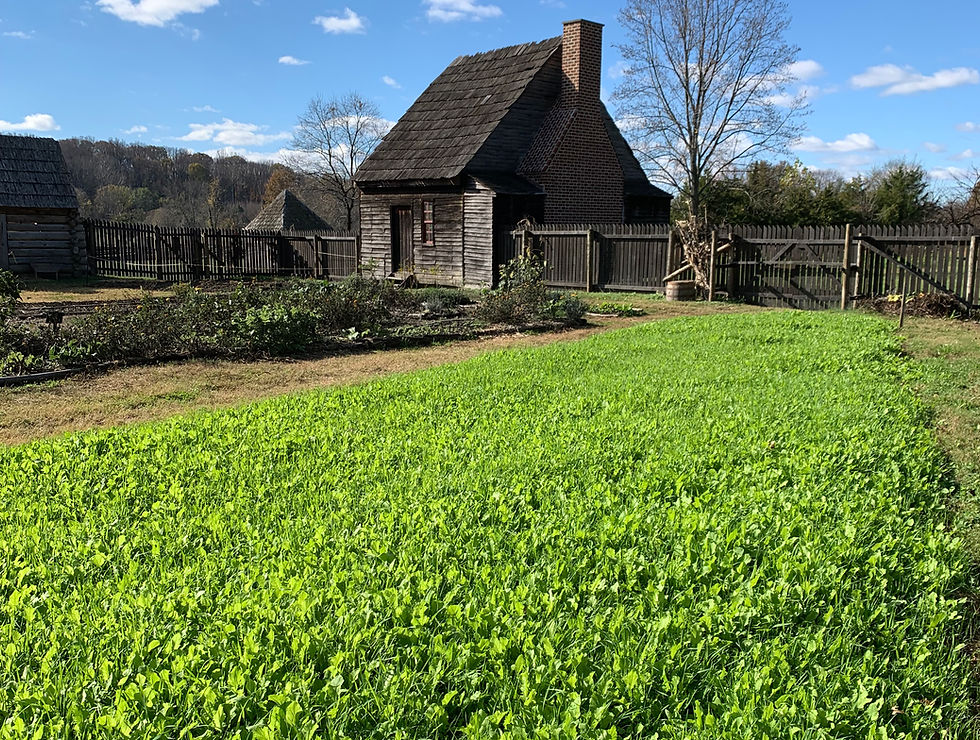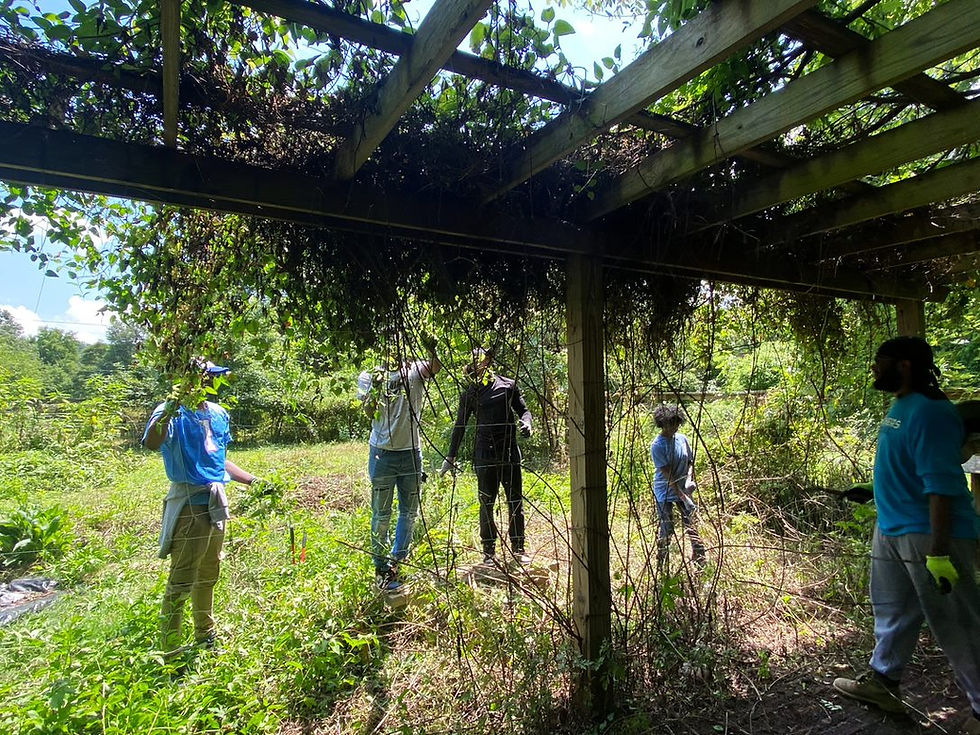Finding the Heart of Food
- Accokeek Foundation

- Aug 5, 2013
- 2 min read
by Rebecca Cecere Seward
There are many ways that food nourishes us. The pure enjoyment of eating, sitting down with the purpose of sharing a meal with others, or anytime that we eat to receive a nutritional benefit, we are nourishing our bodies and hearts with food. The vegetable plants that we have culturally decided to grow and eat contain a number of beneficial phytonutrients, many of which translate into the widely recognized “alphabet vitamins.”
To name a few of our relevant examples, tomatoes and watermelon contain lycopene, an antioxidant that can contribute to skin and heart health. All the orange vegetables (squash, sweet potatoes, etc.) contain beta carotene which is also an antioxidant and contributes to healthy cell development and regeneration. Both of these are carotenoids, and another carotenoid is lutein, great for the eyes, and present in zucchini, greens, and blueberries. As antioxidants, they can all help your body scavenge the free radicals that it comes in contact with through exposure to natural and synthetic chemicals. There is even some evidence that many antioxidants can have anti-carcinogenic properties.
We all know we should eat our veggies, but according to a recent New York Times article, we should also pay attention to our varieties. In the article, published in May 2013 by Jo Robinson, it is suggested that we have bred our vegetables to be high-sugar, high-starch, and low-nutrient. Most wild foods high in nutrients have a bitter or an astringent flavor in addition to their abundance of phytonutrients. So while we were breeding out the bitterness for the most delicious vegetables: “the more palatable our fruits and vegetables became, however, the less advantageous they were for our health,” says Robinson.
When we place our seed orders at the farm, I try to pick seeds that have the words “open-pollinated,” or “gene pool,” or “organic,” as compared to the hybrid varieties that have been generated in a lab. This is because I like to support the farmers that spend years working towards a new variety, or breed through generations for one trait or another. But the consequences of nutrient loss in the less hardy hybrid varieties is not a factor I had thought much about. I’m glad that we choose our heirloom and traditionally bred varieties, that they have their own wildness and old-timey nutritional benefit.
I am glad that we are working with the best stock we can get when growing the food you feed yourselves and your families. But I would add an element that does not classify as a nutrient in food science, and that is our best intentions and love in the food we provide for you every week. I will admit that I do talk sweetly to the vegetables, and we feel connected to these fields as we prepare their bounty for you. As we nourish the soil and crops, I hope you all are able to eat these healthy foods with joy!
Excerpts taken from “Breeding the Nutrition Out of Our Food,” by Jo Robinson. Published May 25, 2013 by the New York Times.
Click here for more Field Notes.







